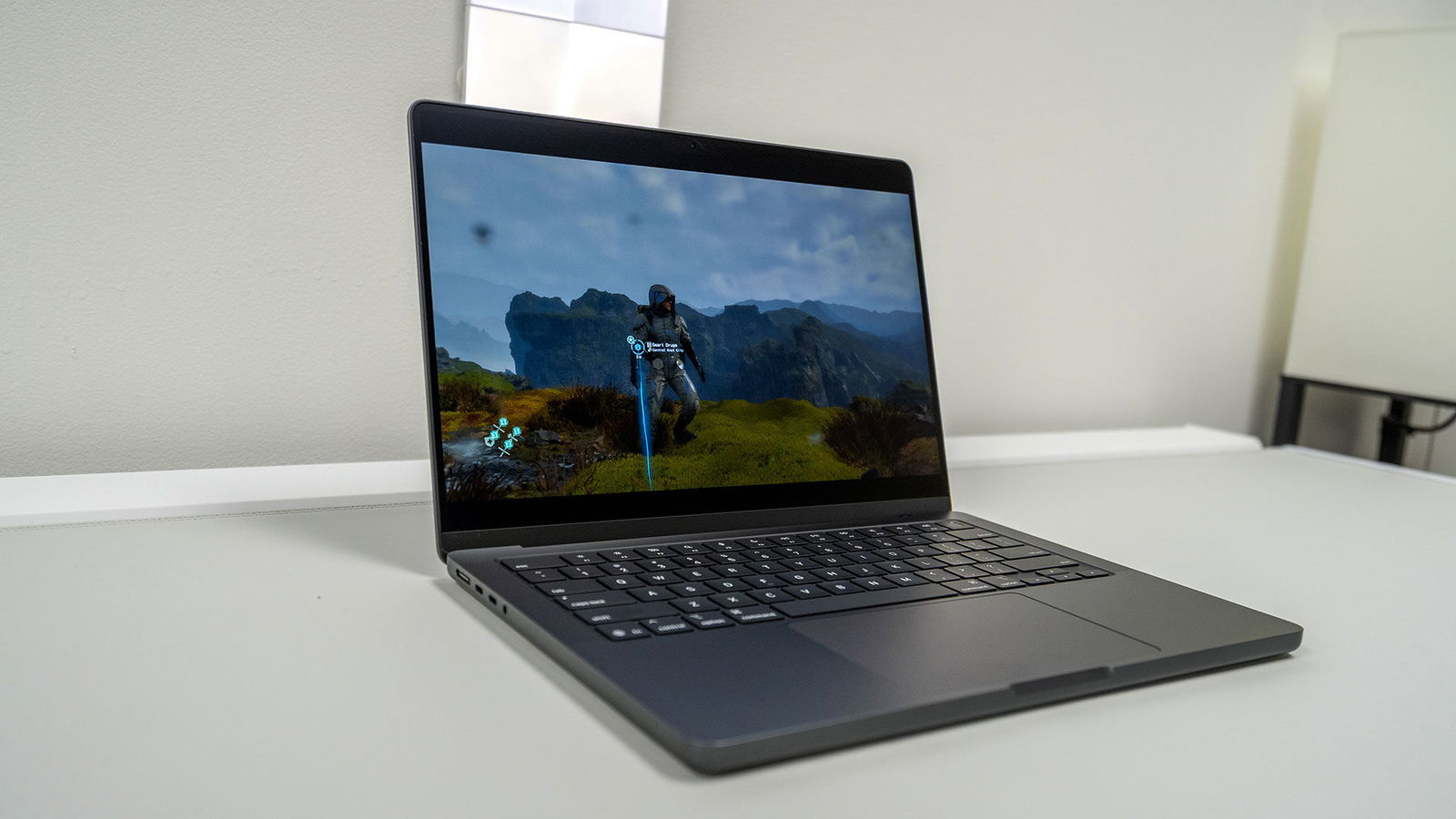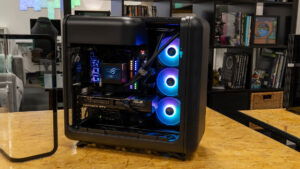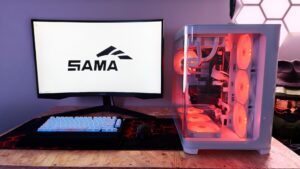The Apple MacBook Pro M5 is here, and while it arrived with little fanfare, there’s a lot to like about this laptop. Apple didn’t hold a major event for the launch — no flashy videos or elaborate keynotes. Instead, the company announced it through a series of press releases, suggesting this is just another routine update. But after spending time with the 14-inch MacBook Pro powered by Apple’s new M5 chip, I’m impressed. It’s clear why Qualcomm and Intel are paying attention to how Apple’s silicon is quickly becoming an industry leader in performance, efficiency and longevity.
If you’ve used or even seen last year’s MacBook Pro, this year’s model shows few external changes. The M5 MacBook Pro keeps the same aluminum body Apple has used for several generations, and honestly, I’m fine with that. The design works and delivers where it matters most. The chassis feels solid, the keyboard remains excellent, and the port selection continues to impress, with three Thunderbolt 4 connections, HDMI, an SD card slot and MagSafe 3 charging. At 3.4 pounds, it’s not the lightest laptop around, but that extra weight translates directly into performance — and it’s still far more portable than many comparable Windows models.
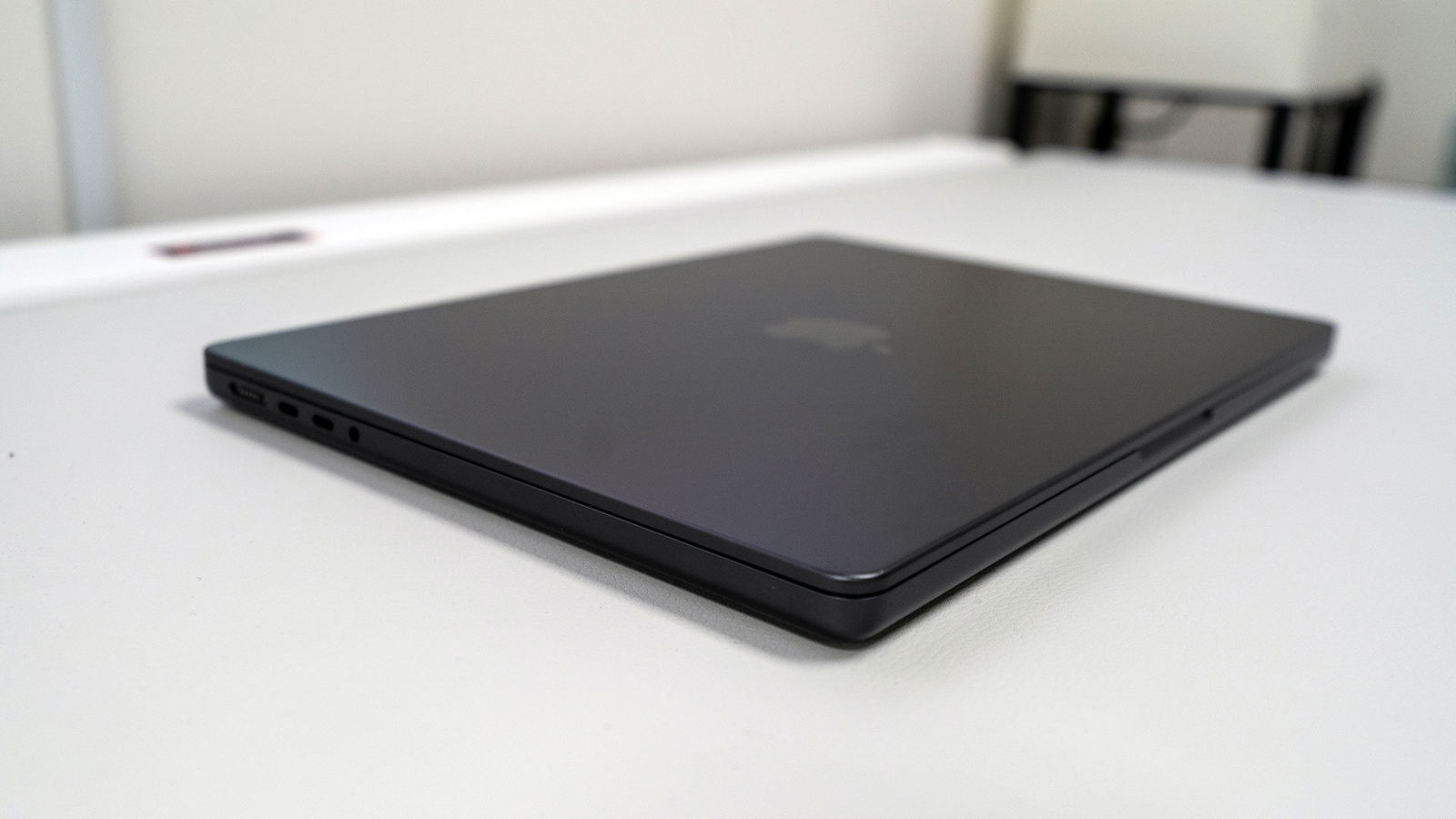
While the exterior of this year’s MacBook Pro remains unchanged, it’s what’s inside that has everyone — myself included — so excited. The M5 chip features a 10-core CPU, a 10-core GPU and a 16-core Neural Engine. Apple says the processor delivers up to 20 per cent faster performance in multi-threaded tasks compared with the M4, but the real story is graphics. The GPU delivers up to 60 per cent gains in gaming and professional applications, redefining what a MacBook Pro can handle. I’ll touch on this in more detail later, but it’s enough to say the 2025 MacBook Pro delivers where it matters most.
When I put the Apple MacBook Pro M5 through its testing, I was genuinely impressed — it delivered far better numbers than I expected right out of the box. In Geekbench 6 testing, the M5 achieved a single-core score of 4,295 and a multi-core score of 17,826. That makes it roughly 10 per cent faster in single-core tasks and 18 per cent quicker in multi-core work compared with the M4 model. GPU performance saw an even bigger jump, with benchmark results nearly doubling in some tests.
“When I put the Apple MacBook Pro M5 through its testing, I was genuinely impressed — it delivered far better numbers than I expected right out of the box.”
I ran the MacBook Pro through a range of demanding tasks, including rendering in DaVinci Resolve and editing in Final Cut Pro X, and everything ran flawlessly. When compared with a Snapdragon X Elite laptop and an x86-based ASUS system, the MacBook Pro handled the same workloads with less noise, less heat and far faster results.
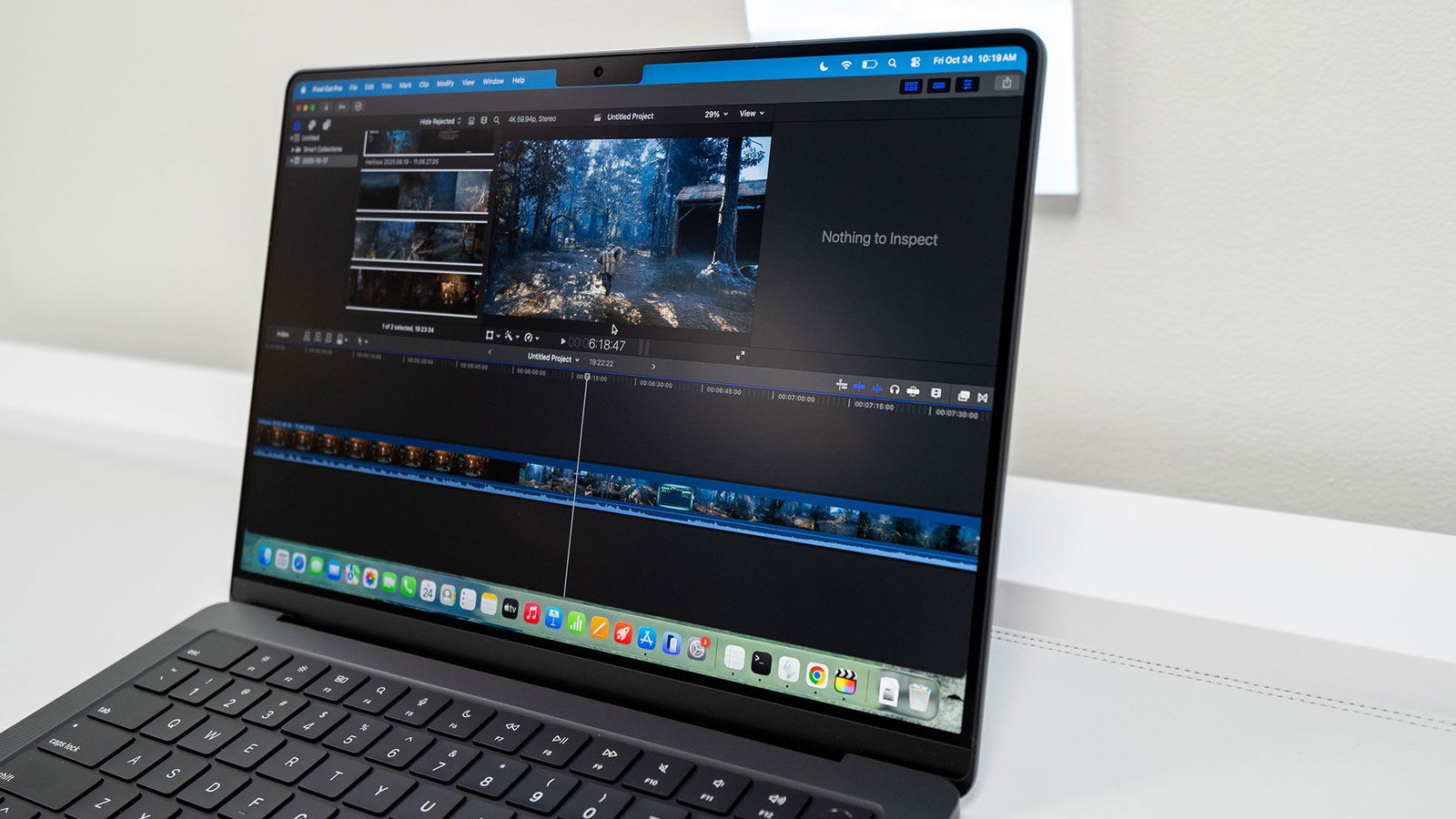
The same clip rendered on the M5 MacBook Pro in about 30 seconds, compared with 65 seconds on the x86 machine and roughly 85 seconds on the Snapdragon X Elite system. That’s not even factoring in how much smoother DaVinci Resolve performed on the Apple device compared with the other two laptops. I was honestly surprised to see the MacBook deliver such consistent, powerful results — especially given its compact size.
When it comes to video editing, anyone working in content creation will appreciate the faster transcoding times. Converting 4K footage to 1080p using HandBrake took just three minutes and 31 seconds on the M5 MacBook Pro, compared with four minutes and 57 seconds on the M4 version. That’s nearly a minute and a half saved on each export — time that quickly adds up over the course of a project. After all, no one likes sitting and watching a progress bar crawl when you’re eager to move on to the next task.
One area where Apple has trailed Windows-based machines in recent years is gaming. Even here, though, Apple has managed to show what’s possible when hardware and software work in tandem to deliver a strong, cohesive experience. Running Shadow of the Tomb Raider at 1080p on high settings, the laptop reached 100 frames per second, compared with just 68 on last year’s M4 MacBook Pro. In more demanding titles such as Cyberpunk 2077, the system managed 35 frames per second at 1080p on ultra settings optimized for Mac hardware, compared with 22 on the M4.
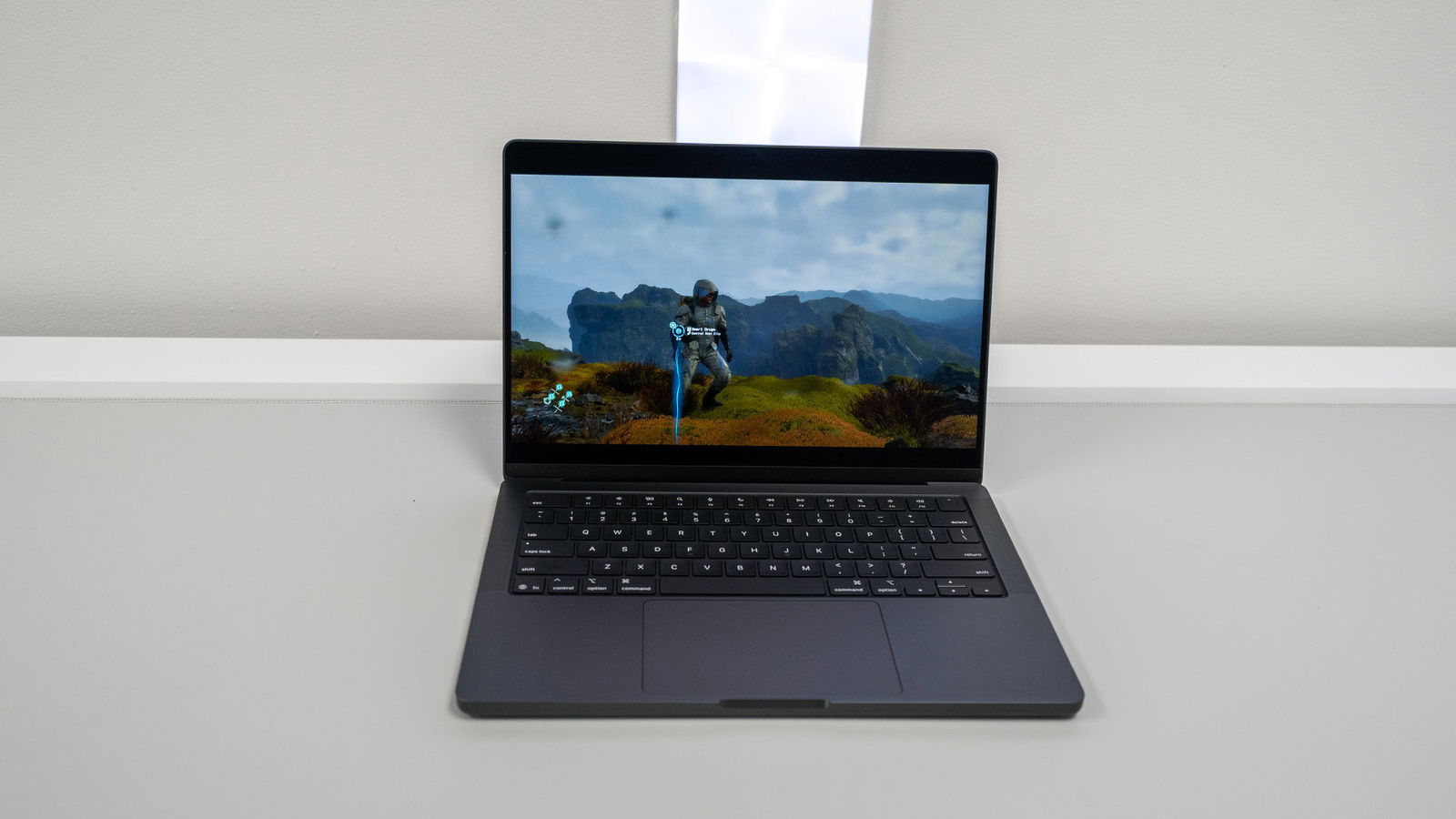
The story continued with Baldur’s Gate 3, where the M5 MacBook Pro held steady at 45 frames per second compared with 23 on the M4 version. Similar results appeared in Death Stranding, where the M5 managed an impressive 82 frames per second on high settings, compared with 63 on the M4. I should note that while these results won’t outpace an RTX 5080, they’re remarkable for such a thin and light laptop — one that stays cool enough to use comfortably under load. The library of games that run flawlessly on macOS remains limited, but what does work performs beautifully and makes me excited to see what developers can achieve as they take full advantage of Apple silicon.
Thankfully, Apple hasn’t skimped on the display, so those games look stunning when played. While the screen remains unchanged from last year, it still managed to impress me, delivering deep blacks and striking detail across the range of tasks I put it through during testing. The 14.2-inch Liquid Retina XDR display still offers 1,000 nits of brightness in standard use and up to 1,600 nits for HDR content. The 120-hertz ProMotion refresh rate keeps everything smooth, whether you’re scrolling through documents or watching video. The optional nano-texture coating, which costs an extra $150, does an excellent job of reducing reflections and glare; sadly, I did not have that for testing during this review period.
One area where I wasn’t expecting such improvement — but where the MacBook Pro still managed to impress me — was drive speed. Apple seems to have made significant gains in storage performance this year. File transfer tests using Blackmagic’s Disk Speed Test showed read speeds of 6,619 MB/s and write speeds of 6,517 MB/s on the 1-terabyte model. That’s roughly double what the M4 version could achieve, putting the base M5 chip in line with the performance of Apple’s M4 Pro. For anyone moving large video files or working with high-resolution photos, these improvements make a real difference.
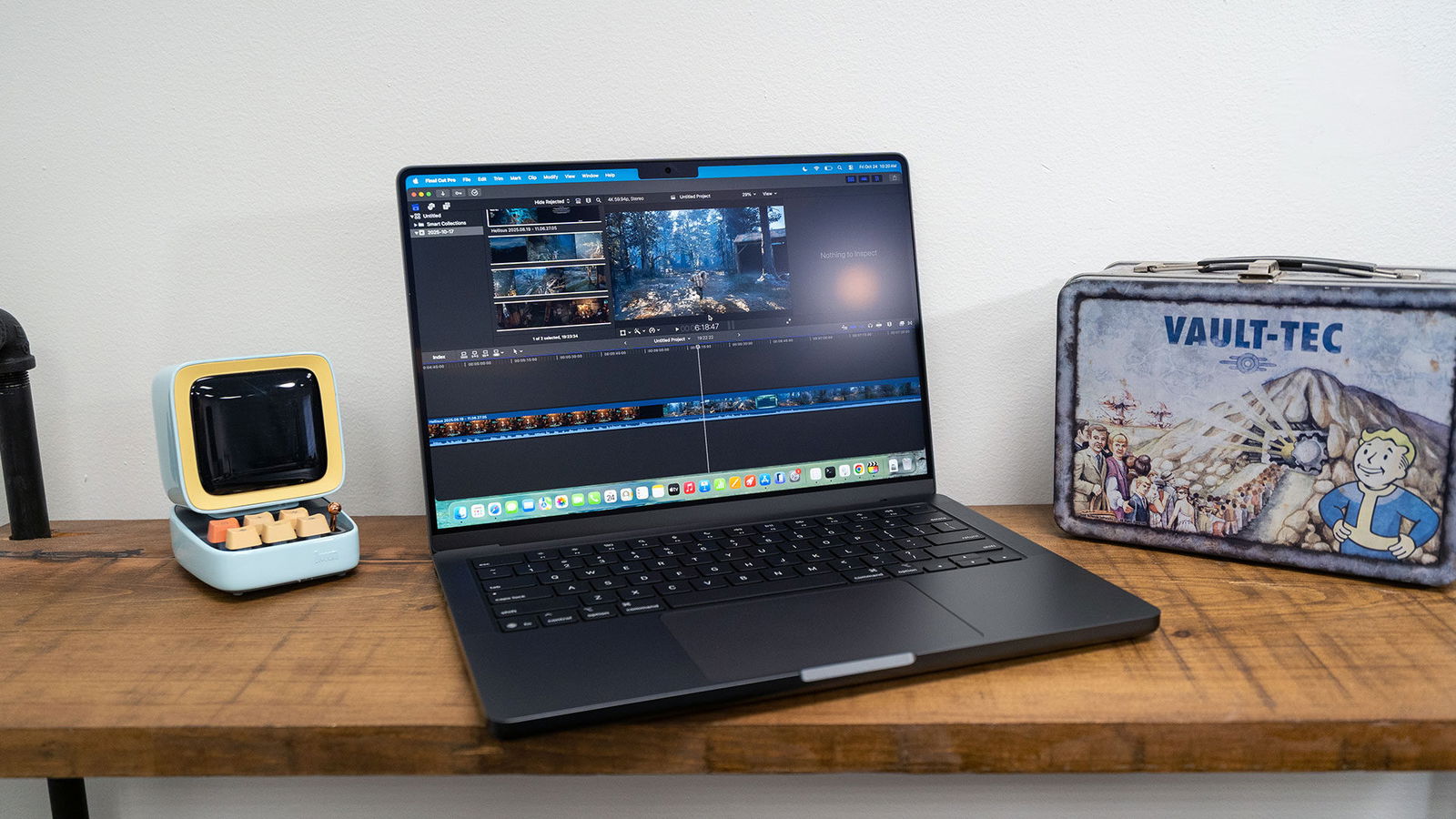
Battery life remains one area where Apple’s silicon is leaps and bounds ahead of what Intel-based laptops can achieve — and this year is no different. The M5 MacBook Pro managed 18 hours and 14 minutes in web-browsing tests at 150 nits of brightness. That’s about 17 minutes less than the M4 model achieved, but it still easily outlasts most Windows competitors. The system also stays cool under load, with fans that activate when needed but never reach the jet-engine noise levels of older Intel MacBooks.
” I have to tip my hat to Apple; the MacBook Pro M5 is one of the longest-lasting laptops I have tested this year…”
When pushed with gaming or high-brightness workloads, battery life drops significantly, with the laptop lasting around 10 hours during testing. Even so, that’s still an impressive result, and real-world endurance will vary depending on how hard you push the hardware — and which games you play. Even with that in mind, I have to tip my hat to Apple; the MacBook Pro M5 is one of the longest-lasting laptops I have tested this year, and the ability to actually play games, while keeping the laptop going for hours, is something few laptops can come close to competing with.
As with much of the laptop’s exterior, Apple has kept what worked before — and that includes the excellent keyboard and trackpad. The company’s scissor-switch keys offer satisfying travel and feedback, while the large haptic trackpad responds consistently to clicks anywhere on its surface. The six-speaker audio system remains one of the best you’ll find in any laptop, with support for Dolby Atmos and genuine bass response that most thin devices can’t match. This is a machine built for professionals: it delivers what creators want most, all in a package that feels complete and remarkably powerful.
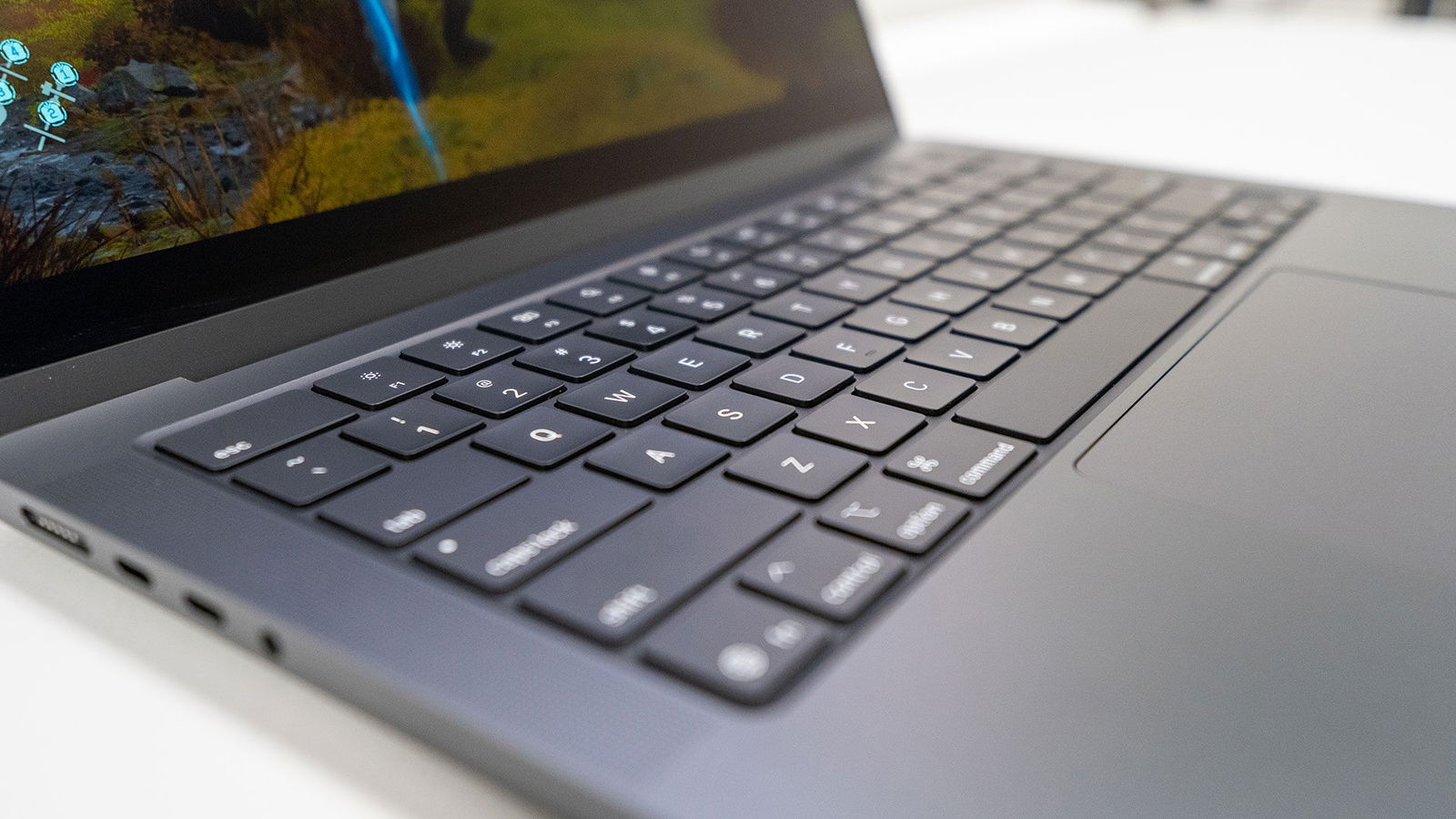
The base model I tested for this review starts at $1,599, with 16 gigabytes of memory and a 512 GB solid-state drive. That’s the same price as last year’s M4 model, making the performance gains even more impressive. However, upgrades remain expensive. Moving to 32 gigabytes of RAM adds $400, while increasing storage from 512 gigabytes to 1 terabyte costs $200. A fully loaded configuration with 32 gigabytes of memory, a 4-terabyte drive and the nano-texture display climbs to $3,369. Many users won’t need that level of hardware, but for those who do, price is a factor — and the Apple premium is worth noting before you buy, especially since this laptop isn’t easily upgradeable.
Despite the improvements, if you bought an M4 MacBook Pro last year, there’s little reason to upgrade — at least not for the average buyer. The gains are real, but probably not worth the cost for most users. That said, anyone still using an M1 or M2 MacBook Pro will find this a compelling update, and this may be the year to take the upgrade plunge. The combination of faster CPU performance, significantly better graphics and improved storage speeds makes this one of the strongest productivity laptops on the market.
Apple may not have made a big deal about the M5 MacBook Pro, but the machine speaks for itself — and I, for one, am impressed. It’s fast, efficient and capable of handling demanding workloads that would have required a much larger desktop only a few years ago. It does so quietly and without sacrificing portability or battery life. The improvements may be evolutionary rather than revolutionary, but evolution, as Apple reminds us, still moves forward. Beyond that, Apple hardware has become genuinely capable of gaming, content creation and everything in between — and I’m glad to see all of that in one sleek, capable package.
- SUPERCHARGED BY M5 — The 14-inch MacBook Pro with M5 brings next-generation speed and powerful on-device AI to personal, professional, and creative tasks. Featuring all-day battery life and a breathtaking Liquid Retina XDR display with up to 1600 nits peak brightness, it’s pro in every way.*
- HAPPILY EVER FASTER — Along with its faster CPU and unified memory, M5 features a more powerful GPU with a Neural Accelerator built into each core, delivering faster AI performance. So you can blaze through demanding workloads at mind-bending speeds.
